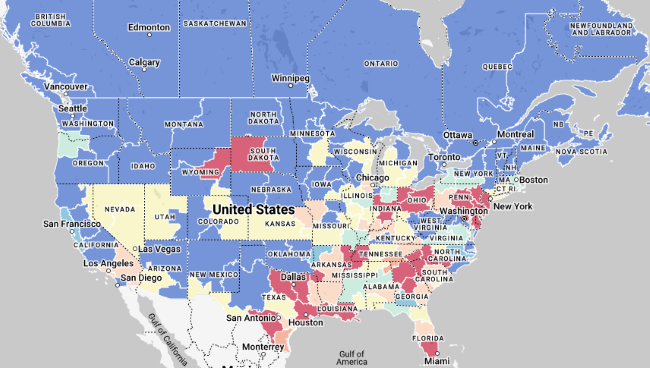Back to March 2025 Industry Update
March 2025 Industry Update: Dry Van
Tariff uncertainty and declining demand levels resulted in a significant drop in average rates.
Spot Rates

Key Points
- The national average dry van rate exclusive of a fuel surcharge declined 7.2% MoM, or just under $0.13, in February to $1.64.
- The average dry van spot linehaul rate was up 2.0% on an annual basis compared to February 2024 and 6.3% below the LT average.
- Initially reported average dry van rates excluding all surcharges were up 1.1% MoM in February but 0.4% below the same month in 2024.
Load-to-Truck Ratio

Key Points
- The dry van load-to-truck ratio (LTR) fell 34.1% MoM in February to 4.73.
- Compared to February 2024, the dry van LTR was up 67.7% YoY and 4.7% above the 5-year average.
- According to DAT load board data in February, dry van load posts were down 32.2% MoM compared to January, while equipment posts were up slightly by 2.9% MoM.
Market Conditions

Dry Van Summary
As the largest sector of the trucking industry, when many pundits reference trucking trends and market drivers, they are typically referencing dry van freight. February research has drastically emphasized the implications of broad tariffs on the trucking industry’s ability to move freight across borders, be that the U.S. southern border or northern border. Be prepared to pay more at the border, DAT reported in the last two weeks of February spot rates from U.S. to Canada for vans hit a two-year high, having risen 18% since the November election. According to ACT Research, the U.S. economy is projected to grow at 2.1% YoY in 2025. Consumer demand remains strong, though some of this reflects the pull-ahead purchases ahead of potential tariff-driven price increases.
Capacity should remain stable with inventory rebalancing and Q2 demand growth expected from Consumer-Packaged Goods and e-Commerce replenishment. Rates should also see gradual growth in Q2, supported by steady Midwest restocking and consumer spending pattern adjustments. Post-holiday shipments wind down with Q1 typically seeing a transition as inventory levels adjust from peak-season highs. While online shopping volumes typically decline post-holiday, warehouse replenishment remains steady, sustaining dry van demand in urban fulfillment zones. A point regarding urban fulfillment from FreightWaves: “The strength in intermodal means there’s been a boom in short-haul trucking.” Should that trend stick, Zach Strickland said, “A lot of the trucks are being utilized for much shorter movements around these cities, and that’s going to change the way that a lot of these carrier networks operate.”